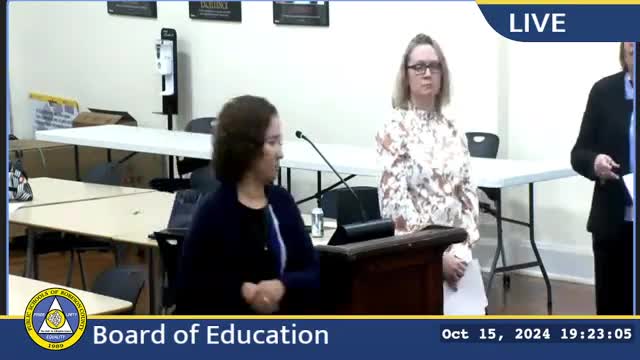Principals Embrace New Leadership Model to Boost Student Success
October 16, 2024 | Public Schools of Robeson County, School Districts, North Carolina
This article was created by AI summarizing key points discussed. AI makes mistakes, so for full details and context, please refer to the video of the full meeting. Please report any errors so we can fix them. Report an error »

During a recent government meeting, Amanda Graham presented on the role of principals as instructional leaders, emphasizing the importance of dedicating 80% of their time to instructional activities rather than managerial tasks. This approach is part of the Leveraged Leadership National Model Framework aimed at improving student outcomes.
Graham outlined various activities that constitute this instructional time, including conducting calibration walks with leadership teams, monitoring classroom instruction, and engaging in data-driven discussions with teachers. She highlighted the significance of an organized instructional calendar to guide principals in their daily activities, ensuring they remain focused on enhancing teaching and learning.
The discussion also touched on the flexibility of the 80/20 time allocation, with Graham noting that while this is a goal, principals are encouraged to use their judgment based on daily needs. Questions arose regarding the role of academic coaches in supporting teachers, with Graham clarifying that coaches are responsible for their own observations and feedback, while principals play a crucial role in guiding and developing their staff.
The meeting further explored the collaboration between district leadership and principals regarding the allocation of Title I funds, confirming that principals had input in decisions about academic coaching positions. The conversation underscored the importance of communication and consistency among leadership teams to ensure that all schools receive the same support and resources.
In closing, the meeting addressed the district improvement plan, with feedback from the community being solicited through various channels. The plan aims to align school initiatives with district objectives, ensuring that all schools are equipped to meet the diverse needs of their students. The meeting concluded with a call for further discussions on Multi-Tiered Systems of Support (MTSS) and health services updates, reflecting the ongoing commitment to enhancing educational outcomes and addressing student needs.
Graham outlined various activities that constitute this instructional time, including conducting calibration walks with leadership teams, monitoring classroom instruction, and engaging in data-driven discussions with teachers. She highlighted the significance of an organized instructional calendar to guide principals in their daily activities, ensuring they remain focused on enhancing teaching and learning.
The discussion also touched on the flexibility of the 80/20 time allocation, with Graham noting that while this is a goal, principals are encouraged to use their judgment based on daily needs. Questions arose regarding the role of academic coaches in supporting teachers, with Graham clarifying that coaches are responsible for their own observations and feedback, while principals play a crucial role in guiding and developing their staff.
The meeting further explored the collaboration between district leadership and principals regarding the allocation of Title I funds, confirming that principals had input in decisions about academic coaching positions. The conversation underscored the importance of communication and consistency among leadership teams to ensure that all schools receive the same support and resources.
In closing, the meeting addressed the district improvement plan, with feedback from the community being solicited through various channels. The plan aims to align school initiatives with district objectives, ensuring that all schools are equipped to meet the diverse needs of their students. The meeting concluded with a call for further discussions on Multi-Tiered Systems of Support (MTSS) and health services updates, reflecting the ongoing commitment to enhancing educational outcomes and addressing student needs.
View full meeting
This article is based on a recent meeting—watch the full video and explore the complete transcript for deeper insights into the discussion.
View full meeting
